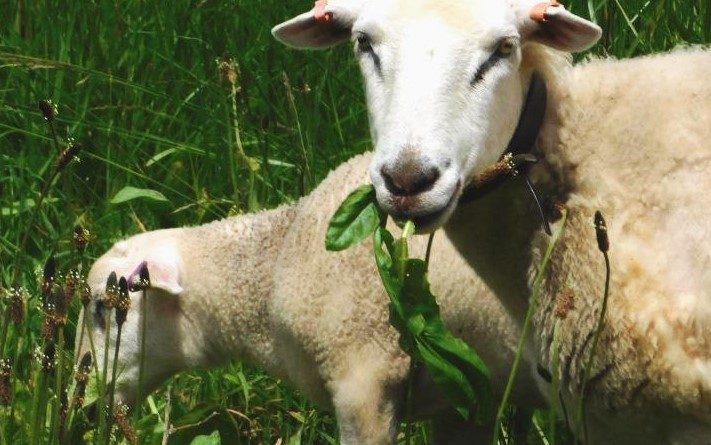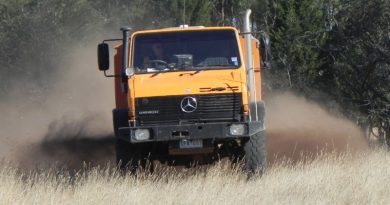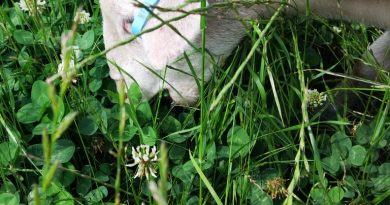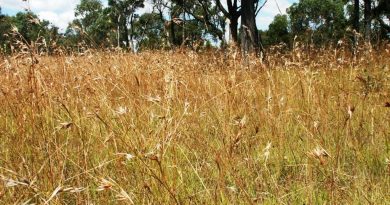Give sheep greater pasture species richness and they eat more
By Patrick Francis
There’s been a long held school of thought amongst some farm advisors that the optimum pasture mix for southern Australian sheep production is phalaris plus sub clovers. Phalaris provides the year round perennial grass cover, while the sub clovers provide the highly nutritious late autumn, winter and early spring feed for optimum lamb growth. It’s promoted as a simple, cost effective yet resilient combination for economic livestock production.
But innovative research by Chinese and Australian scientists has found that lack of pasture richness (number of species present) actually results in less pasture eaten per day and potentially lower animal productivity. The results presented in the Journal of Applied Ecology by Ling Wang et al support the idea that multi-species pastures are good for sheep productivity as well as ecosystem services by improving plant biodiversity and co-benefits stemming from it.
There is a strong argument for sowing phalaris as the dominant or only perennial grass species across south eastern Australia. Many trials demonstrate that of the major species available phalaris is the most persistent.
Typical is an eight year evaluation of perennial grasses on a property near Braidwood NSW by Department of Primary Industries agronomist Michael Keys. Four popular perennial grass species were sown in 1999 and rotationally grazed with sheep until 2008. Species persistence was measured each year. By 2008 the phalaris had not only survived but its plant frequency had increased to 61%, Table 1. In contrast perennial ryegrass had died out, Tall Fescue declined to 11% frequency and Cocksfoots declined to 22%

Table 1: Over eight years Phalaris increased plant number under sheep rotational grazing while Perennial Ryegrass, Tall Fescue and Cocksfoot species declined. Source: Mike Keys Grassland Society of NSW 2007 annual conference.
The consideration of ecosystem functions in combination with livestock productivity highlights the change in thinking taking place amongst many livestock farmers and farm advisors over the past 20 years.
Conventional approaches to measuring livestock pasture dry matter intake (DMI) are based around the formula DMI = R x S x T
where R = bites per unit time, typically minutes; S = average bite size typically gram DM per bite; T = time available for grazing (minutes per day). C. T. Westwood presented this formula in his presentation to the 2011 Grassland Society of NSW annual conference entitled “Optimising the intake of feed by pasture-fed sheep and cattle”. He noted multiple interrelating animal-centric factors interact with pasture attributes to collectively determine intake.
“No single pasture, animal or management attribute should be considered in isolation as a potential driver of DMI. Rather each component of the grazing system should be collectively considered, given the multiple interactions between each of these variables”.

Figure 1: Factors that influence the intake of pasture dry matter by sheep and cattle. Source: C.T. Westwood 2011, photo Patrick Francis.
Westwood’s figure 1 highlights the factors he sees that influence pasture intake. In the discussion he makes no mention of the number of pasture species present as a factor influencing intake. Instead he uses the term high quality temperate pastures as the key factor determining optimal intake of pasture dry matter alongside being grazed “… no lower than 4 – 6cm (sheep) or 8 – 10cm (beef and dry dairy cattle)…”.
The reference to pasture quality may satisfy the scientific basis for determining intake but it may not embrace each animal’s plant species preferences which are not measured scientifically.
Other livestock pasture intake research alludes to the issue of the impact of preference. In her 2008 paper “Factors affecting intake by grazing ruminants and related quantification methods: a review” Virginie Decruyenaere raised the issue of animal preference in conjunction with a host of factors as per figure 1.
“The level of intake can be conditioned by other characteristics of the forage, such as flavour (taste and smell), appearance, texture and by the post-ingestive feedback occurring after its intake. In other terms: “if forage tastes good, animals tend to eat it more”.
Science can’t measure taste and uses other characteristics such as ME and CP to provide a correlation for it. Anyone watching sheep or cattle grazing behaviour can see each animal walking through a paddock, nose down in the pasture stopping to eat particular plants and not others, despite all looking the same. According to Decruyenaere the flavour – feedback interaction depends directly on chemical characteristics of feed/pasture species, animal nutrition status and the animal’s past or recent grazing experiences.
The classic example of learned taste impact is seen with lambs grazing brassica species fodder pasture for the first time. Despite its high ME, CP and digestibility, brassica taste takes up to 10 days for the lambs to acquire and alternative feed (or pasture) sources are required to prevent a serious lamb live weight loss in the meantime. In contrast, lambs introduced to chicory pasture of similar ME, CP and digestibility for the first time will immediately begin grazing it.
According to Dr Fred Provenza who is renowned for studying livestock grazing behaviour “animals learn from their mothers (diet), before and after birth, they learn from their peers, they learn by testing new foods, accepting them or rejecting them according to the consequences induced by this intake”.
Plants taste different
Plant taste and post-ingestive feedback is also responsible for the way ruminants learn about toxicity of plants. “For grazing and more for browsing ruminants, numerous plants contain secondary metabolites like tannins, terpenes that can affect digestibility, cause emetic (vomit) effect and, as a consequence, reduce the voluntary intake. Ruminants are able to use this information to modulate or to avoid the intake of such plants if it is necessary”.
Decruyenaere also identified sward species composition as an influence on ruminant intake but did not identify the importance of species number, referring only to the effect of grasses versus legumes. “Compared to grasses, legumes such as white clover are often associated with a higher level of intake”. This is partly explained by legumes needing less time to masticate a bite than for a grass.
But even with clovers there is a proviso to how much ruminants will eat per day. Research offering sheep plots of clovers and grasses in the same paddock found that while the animals preferred to eat clovers grazing them for 70% of the time, they also grazed the grasses for 30% of time. In other words diet balance is important. This could be related to post-ingestive appetite mediation signals from metabolites and hormones emitted by the central nervous system and the peripheral organs like the liver, pancreas and intestinal tract.
Another interesting factor associated with pasture intake identified in Decruyenaere’s review which relates to a role for species richness is plant morphological characteristics in particular grass stems. “Stems can have a barrier effect on bite size and instantaneous intake rate. The higher the stems density, the smaller is the leaf bite area and the slower is the biting rate. This leads to a decrease of the instantaneous intake rate.”
Different grass species will form stems at different times based on their maturity patterns. For instance, in southern Australia, Sweet Vernal grass forms stems in September, Tall Fescue varieties in October, Cocksfoot and Phalaris varieties in late October and Bent grass in December. Not only are these species more easily grazed when vegetative, they all have variations in stem morphology which dictates accessibility to tiller leaves if flowering cannot be prevented by strategic grazing or mechanical topping.
If the number of grasses in a paddock is only one, such as in a Phalaris dominant pasture, the stems emerge at the same time possibly impacting leaf accessibility. In contrast with multi-grass species, stem emergence is spread over time so is less of a factor in animal intake per bite. As well, the morphological stem difference between grass varieties can impact bite access to tillers. For instance, Cocksfoot and Tall Fescues have strong, open stems, while ryegrass and bent grass have much weaker stems that tend to smother emerging tiller leaves making access for biting them difficult, figure 2.

Figure 2: Grass stem morphology can impact dry matter intake. Left bent grass has weak stems which collapse over regrowing tillers. Right, Cocksfoot stems are strong, remain standing to ensure tiller leaves are easily grazed. Photos: Patrick Francis.
In the Ling Wang research, the effects of pasture species richness on sheep daily dry matter intake reached its optimum impact at eight species, then levelled off, figure 3a. Intake of ME and protein per day increased in line with the increased species richness, figures 3c and 3d. The two negative indexes for dietary quality, neutral detergent fibre (NDF) and acid detergent fibre (ADF) were highest with low species richness. These results suggest the benefits of higher plant species richness came from “…a greater amount of forage eaten and not a higher quality of forage.”
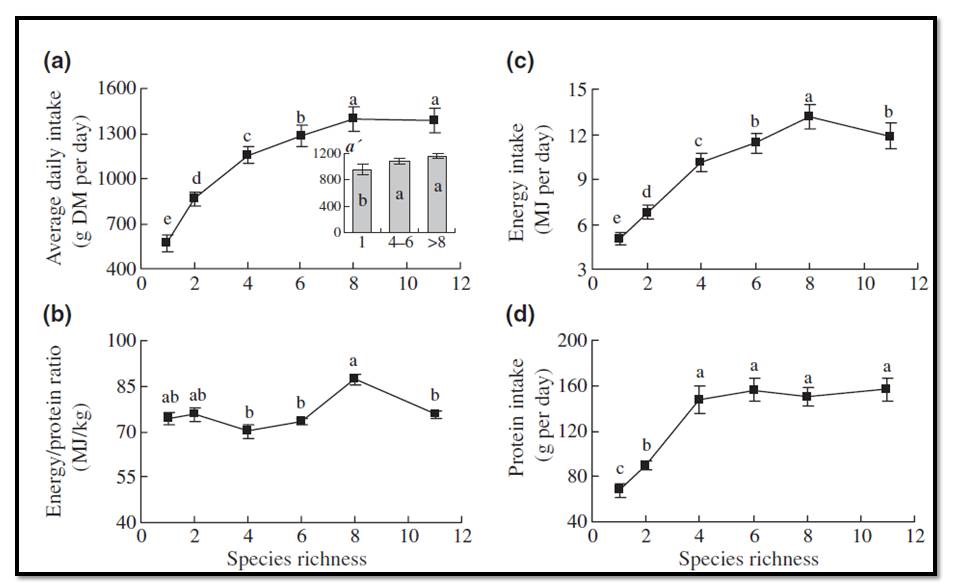
Figure 3: Effects of plant species richness on the diet selected by sheep. (a) The average daily dry matter (DM) intake (a¢, the average daily DM intake in the field grazing experiment). (b) Energy ⁄ protein ratio. (c) The average daily metabolisable energy intake. (d) The average daily protein intake. Points are the means for nine sheep measured over 8 days and with three species combinations within each level. Different letters indicate points significantly different from each other (P < 0.05).
According to Wang this is the first study to show herbivores will consume greater quantities of pasture when grazing a higher species richness sward. Prior to this many studies have demonstrated higher livestock performance when eating a mixture of plant species.
The scientists contend that the lower intakes on species poor pasture (one or two dominant species) is likely to be the result of “…monotonous flavour and nutrient and toxin limitation. …There is greater chance that palatable food will occur in species-rich rather than species poor plant combinations”.
Another interesting conclusion from this research was the finding that when the least palatable grass was combined with different herbage functional types such as legumes or herbs, the intake of the least palatable grass increased.
“Different plant functional types usually differ considerably in nutritional characteristics, which may provide a complementary nutritional advantage to the herbivore thereby stimulating food intake.”
This suggests that farmers refrain from preparing single species fodder pastures like brassica or cereals. A better strategy would be to ensure livestock have access to other grass or legume species in the same paddock by not sowing the entire area to the fodder crop. Even having two or three highly palatable species in a paddock does not ensure higher intake.
“Only when sheep have access to higher plant species richness can the presence of highly palatable species enable sheep to achieve a higher nutrient intake. Furthermore, our data indicate that plant functional group richness was a major determinant of nutrient intakes. The nutrient intake of sheep was much higher in those species combinations with high functional group richness (e.g. a combination of legumes, grasses and forbs/herbs). …Sheep must select foods with nutrients that complement each other”.
The researchers concluded: “The strong asymptotic relationship between plant species richness and voluntary food intake (Fig. 3) suggests that the maintenance of plant species richness in rangeland plant communities is critically beneficial for ruminant animal production as well as the conservation of biodiversity”.

Figure 4: Even with highly palatable pasture species sheep daily dry matter intake is increased with greater species richness and particularly if it achieved with more plant functional groups like grasses plus legumes plus herbs (forbes) as in this pasture. Photo: Patrick Francis
References:
“Factors affecting intake by grazing ruminants and related quantification methods: a review,” Virginie Decruyenaere, André Buldgen, Didier Stilmant; Biotechnol. Agron. Soc. Environ. 2009 13 (4), 559 – 573
“Mechanisms linking plant species richness to foraging of a large herbivore”, Ling Wang, Deli Wang, Zhengbiao He, Guofang Liu and Kenneth C. Hodgkinson; Journal of Applied Ecology 2010, 47, 868–875.
“Optimising the intake of feed by pasture-fed sheep and cattle” by C.T. Westwood, Proceedings of the 26th annual conference of The Grassland Society of NSW, 2011.
“Persistence of perennial pastures in a variable seasons” by Michael Keys, Grassland Society of NSW 2007 annual conference.

